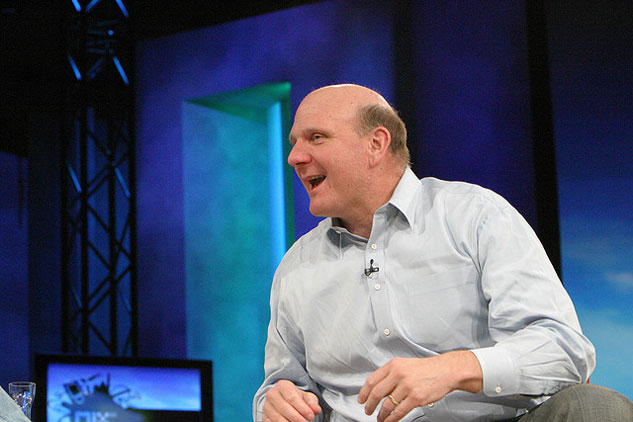Steve Ballmer Calls BS On Microsoft Cloud Revenue Numbers, Says Universal Windows 10 Apps Won’t Work

This week, Ballmer once again had some words to say about Microsoft, and this time he wasn’t so kind. At Microsoft’s annual shareholder meeting held yesterday, Ballmer, Microsoft’s largest shareholder, took issue with Microsoft’s failure to disclose its profit margins and sales figures for its cloud services and hardware business.
“It’s sort of a key metric -- if they talk about it as key to the company, they should report it,” said Ballmer.
Microsoft has embraced a “Cloud First” strategy with a heavy emphasis on subscriptions services like Office 365 and OneDrive along with its Azure cloud computing platform and “Windows as a Service.” As Ballmer rightfully points out, it would be nice to know exactly how well Microsoft’s cloud business is doing nearly two years after Nadella charted a new path for the company.
Microsoft’s decision to report its revenue run rate, which in essence uses a single quarter to project annual performance, is simply “bullshit” according to Ballmer. Profit margins for software, which has been Microsoft’s bread and butter for years, is typically quite high. However, profit margins on cloud services and hardware — unless you’re Apple — tend to be much lower.

“They should report the revenue, not the run rate,” added Ballmer.
But Ballmer didn’t stop there; he also took Microsoft to take over its lack of focus with the Windows Phone platform. Windows 10 Mobile officially launched with the Lumia 950 and 950 XL last month, but won’t be available to existing Lumia smartphones as an over-the-air update until later this month. As has always been the case with Windows Phone, a lack of popular apps – apps that are easily found on iOS and Android platforms -- is a concern for customers. Microsoft is addressing this issue head on with Project Islandwood, which allows developers to easily port their iOS apps to Windows Phone.
Microsoft is also pushing Universal Apps, which allows developers to create apps for mobile, PC and Xbox One platforms using a unified codebase. Yet another route, labeled Project Astoria, would allow Windows 10 Mobile apps to run Android APKs in an emulation mode. Unfortunately, that project has been put on hold.
According to Ballmer, that is a bad move on Microsoft’s part. He noted that Universal Apps “won’t work” and that Windows 10 Mobile devices instead need to be able to “run Android apps.” While that sounds good in theory, Android app emulation in Windows 10 Mobile would be far from an ideal and would likely take a performance hit. Native, Universal Apps are by far the best solution for Windows 10 Mobile, but the key will be getting developers to make the effort to support an operating system that is sitting at below 3 percent in global market share.

